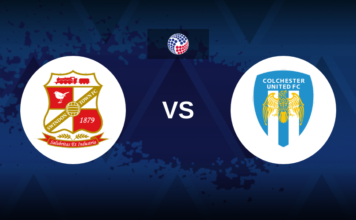In 2019, the International Football Association Board (IFAB) made a seemingly small change to football’s rules: goal kicks no longer had to leave the penalty area before being played to a teammate.
At first glance, it appeared a minor tweak, but five years on, this rule has revolutionized how teams build play from the back, altering the tactical landscape of modern football in ways few anticipated.
Before the rule change, goal kicks were largely unremarkable. Goalkeepers typically booted the ball as far as possible, and teams positioned themselves accordingly. It was a standard restart, often an afterthought. But by allowing the ball to be played within the penalty area, the 2019 change has completely altered the dynamics, offering new avenues for creativity and risk-taking in possession.
Since then, the number of short goal kicks in the Premier League has more than doubled. UEFA’s technical review of the 2024 European Championship highlighted three key trends stemming from the rule: the rise of man-to-man marking, the hollowing out of central midfield, and the tactic of bypassing the opposition press with direct play.
Man-to-Man Pressing and Stretching the Pitch
One of the most profound changes is how teams now lure their opponents into a high press. With goalkeepers and defenders now free to exchange passes inside the box, the game’s geometry has shifted. Teams no longer need to commit to one side of the pitch, freeing up central space and creating dilemmas for pressing opponents.
“It’s so hard to remain compact,” said an analyst from a top European club. “If you press the goalkeeper, you’re risking a 3v3 or 4v4 at the back.”
The result? Teams like Inter Milan under Antonio Conte, and the German national team, have developed intricate moves to stretch opposition defenses before launching long balls that their forwards can chase. The high-stakes nature of this tactic has led to a rise in man-to-man pressing, with opponents forced to commit more players to prevent teams from exploiting the space.
Unlocking Central Spaces
Previously, goalkeepers were pressured into playing wide, leaving their team locked into one side of the pitch. Now, with more freedom, central areas have become vital battlegrounds. Teams like Arsenal frequently use center-back-to-goalkeeper passing routines, keeping possession centrally and drawing the opposition’s press inward.
This shift has resulted in the hollowing out of central midfield. As midfielders drop deeper to receive the ball from the goalkeeper, opposing midfielders must follow suit, stretching the space between defensive lines and opening up passing lanes.
The Art of Risk and Reward
With new opportunities come new risks. Playing out from the back is inherently dangerous, and the margin for error is slim. But for teams that can execute it well, the rewards are substantial. Liverpool, under new coach Arne Slot, has embraced the philosophy, with goalkeepers delaying passes and defenders dribbling across their own penalty area until space opens up.
The Dutch Eredivisie side Feyenoord, also managed by Slot, offers another bold example. In a 2024 match against NEC Nijmegen, goalkeeper Justin Bijlow delayed his passes to the last possible moment, trusting center-back Thomas Beelen to dribble across his own box before finding the right opportunity to pass.
The calculated risk of these moves is clear. By baiting the opposition press, teams can create significant advantages further up the pitch. And when the press becomes too intense, the goalkeeper is used to reset play, sending long balls to forwards who are positioned higher upfield to contest the second ball.
A Blank Canvas for Innovation
The 2019 rule change has given coaches a blank tactical canvas, allowing for greater innovation in play. Managers like Southampton’s Russell Martin and Brighton’s Roberto De Zerbi have used this to their advantage, constructing sequences that involve several players within their own penalty area to draw the press before springing attacks.
The key to success, as highlighted by these tactics, is variability. Teams alternate between short and long goal kicks, keeping opponents guessing. A short pass might bait the press, but a well-timed long ball can exploit the gaps that pressing players leave behind.
As Arsène Wenger, FIFA’s Chief of Global Football Development, put it: “The rule was introduced to make the game faster and more spectacular, but even more has changed. It has transformed goal kicks into a weapon, a strategic restart that has redefined the modern game.”
What began as a simple tweak to speed up play has become a tactical revolution. Goalkeepers, once seen as isolated figures standing deep in their penalty area, are now orchestrators of possession, central to their team’s buildup and pivotal to breaking down opposition presses. As this trend continues to evolve, it’s clear that the humble goal kick will remain at the heart of football’s ongoing tactical evolution.







